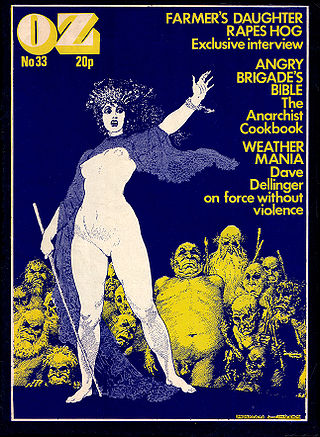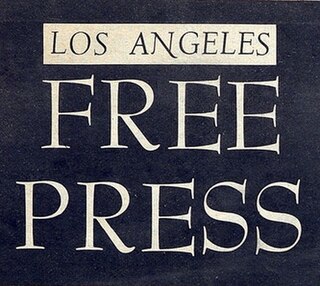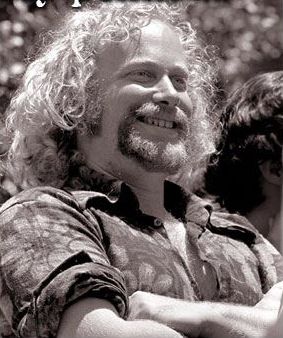
The Weather Underground was a far-left militant organization first active in 1969, founded on the Ann Arbor campus of the University of Michigan. Originally known as the Weathermen, the group was organized as a faction of Students for a Democratic Society (SDS) national leadership. Officially known as the Weather Underground Organization (WUO) beginning in 1970, the group's express political goal was to create a revolutionary party to overthrow the United States government, which WUO believed to be imperialist.

The terms underground press or clandestine press refer to periodicals and publications that are produced without official approval, illegally or against the wishes of a dominant group. In specific recent Asian, American and Western European context, the term "underground press" has most frequently been employed to refer to the independently published and distributed underground papers associated with the counterculture of the late 1960s and early 1970s in India and Bangladesh in Asia, in the United States and Canada in North America, and the United Kingdom and other western nations. It can also refer to the newspapers produced independently in repressive regimes. In German occupied Europe, for example, a thriving underground press operated, usually in association with the Resistance. Other notable examples include the samizdat and bibuła, which operated in the Soviet Union and Poland respectively, during the Cold War.

The White Panthers were an anti-racist political collective founded in November 1968 by Pun Plamondon, Leni Sinclair, and John Sinclair. It was started in response to an interview where Huey P. Newton, co-founder of the Black Panther Party, was asked what white people could do to support the Black Panthers. Newton replied that they could form a White Panther Party. The counterculture era group took the name and dedicated its energies to "cultural revolution.” John Sinclair made every effort to ensure that the White Panthers were not mistaken for a white supremacist group, responding to such claims with "quite the contrary." The party worked with many ethnic minority rights groups in the Rainbow Coalition.
The Underground Press Syndicate (UPS), later known as the Alternative Press Syndicate (APS), was a network of countercultural newspapers and magazines that operated from 1966 into the late 1970s. As it evolved, the Underground Press Syndicate created an Underground Press Service, and later its own magazine. For many years the Underground Press Syndicate was run by Tom Forcade, who later founded High Times magazine.

The Los Angeles Free Press, also called the "Freep", is often cited as the first, and certainly was the largest, of the underground newspapers of the 1960s. The Freep was founded in 1964 by Art Kunkin, who served as its publisher until 1971 and continued on as its editor-in-chief through June 1973. The paper closed in 1978. It was unsuccessfully revived a number of times afterward.

The Berkeley Barb was a weekly underground newspaper published in Berkeley, California, during the years 1965 to 1980. It was one of the first and most influential of the counterculture newspapers, covering such subjects as the anti-war movement and Civil Rights Movement, as well as the social changes advocated by youth culture.

Stewart Edward "Stew" Albert was an early member of the Yippies, an anti-Vietnam War political activist, and an important figure in the New Left movement of the 1960s.
Spectator Magazine was an American weekly newsmagazine published and distributed in the San Francisco Bay Area from 1978 until October 2005. The magazine had its historical roots in the ‘60s underground weekly, The Berkeley Barb, first published on August 13, 1965. In addition to political free speech issues, the libertarian values of Barb founder Max Scherr and staff included sexual freedom, which led to the acceptance of adult ads into the pages of the newspaper. In 1978, The Barb management decided to discontinue adult ads in order to try to get mainstream ads, such as liquor, and cigarette ads. The staff of the Adult Ads Center Section decided to continue on as a new and separate publication, and thus Spectator Magazine was born. The last Berkeley Barb was published July 3, 1980 when the publication went under due to a lack of ads revenues.
Nicholas F. "Nick" Benton is the founder, owner, and editor of the Falls Church News-Press, a weekly newspaper distributed free in Falls Church, Virginia, and in parts of Fairfax County, Arlington County, and Washington D.C.

Founded in 1950 by David A. Stein and wife Celia Stein, The Riverdale Press is a weekly newspaper that covers the Northwest Bronx neighborhoods of Riverdale, Spuyten Duyvil, Kingsbridge, Kingsbridge Heights and Van Cortlandt Village, as well as the Manhattan neighborhood of Marble Hill.

The Black Panther Party was a Marxist-Leninist and black power political organization founded by college students Bobby Seale and Huey P. Newton in October 1966 in Oakland, California. The party was active in the United States between 1966 and 1982, with chapters in many major American cities, including San Francisco, New York, Chicago, Los Angeles, Seattle, and Philadelphia. They were also active in many prisons and had international chapters in the United Kingdom and Algeria. Upon its inception, the party's core practice was its open carry patrols ("copwatching") designed to challenge the excessive force and misconduct of the Oakland Police Department. From 1969 onward, the party created social programs, including the Free Breakfast for Children Programs, education programs, and community health clinics. The Black Panther Party advocated for class struggle, claiming to represent the proletarian vanguard.

San Francisco Express Times was a counterculture tabloid underground newspaper edited by Marvin Garson and published weekly in San Francisco, California from January 24, 1968, to March 25, 1969, for a total of 62 issues, covering and promoting radical politics, rock music, arts and progressive culture in the Bay Area. It was a member of the Underground Press Syndicate, and sold for 15 cents.
Willamette Bridge was an underground newspaper published in Portland, Oregon from June 7, 1968, to June 24, 1971. In the spring of 1968, several groups of people in Portland were discussing starting an "underground" newspaper in Portland, similar to the Los Angeles Free Press or the Berkeley Barb. They were partially motivated by a frustration with the reporting in the mainstream press, which was still supporting the Vietnam war, opposing progressive movements like the United Farmworkers Union, and showed no understanding at all of the growing "Counterculture" and its music, dress and mores. On the other hand, they saw many things going on in the city that were positive, but isolated- Antiwar activity at Reed College, "Hippies" gathering around Lair Hill park, the progressive wing of the Democratic Party gathering strength, craft stores and head shops opening around town, local bands like The Great Pumpkin and The Portland Zoo giving concerts. A newspaper could bring these groups together and break the information monopoly of the daily papers.
Max Scherr was an American underground newspaper editor and publisher known for his iconoclastic 1960s weekly, the Berkeley Barb.
The San Diego Free Press was an underground newspaper founded by philosophy students of Herbert Marcuse at the University of California, San Diego in November 1968, and published under that title biweekly until December 1969, when it became the weekly Street Journal starting with its 29th issue. The paper's contents were a mix of radical politics, alternative lifestyles, and the counterculture, reflecting in part Marcuse's Frankfurt School Marxist/Freudian ideas of cultural transformation.
The Massachusetts Daily Collegian is an American daily newspaper founded in 1890, and the independently funded, student-operated newspaper of the University of Massachusetts Amherst. The Collegian is a non-profit funded entirely through advertising revenue and receives no funding from the university or from student fees. In 2018, the Collegian scaled back its print edition to one issue per month, with digital-only articles continuing to be released daily.

The OB Rag was an underground newspaper published between 1970 and 1975 in the Neighborhood of Ocean Beach, San Diego, California, United States. The O in the title is also a peace symbol. Other San Diego underground newspapers that dealt with similar issues include the San Diego Free Press and The San Diego Door.

Judy Gumbo Albert, known as Judy Gumbo, is a Canadian-American activist. She was an original member of the Yippies, the Youth International Party, a 1960s counter culture and satirical anti-war group, along with fellow radicals Anita and Abbie Hoffman, Nancy Kurshan and Jerry Rubin, and husband Stew Albert Judy received her nickname, "Gumbo," from Black Panther Party leader Eldridge Cleaver. Cleaver first referred to her as "Mrs. Stew," finding her refusal to use her husband's surname unacceptable. When Judy objected, Cleaver nicknamed her Gumbo, because "Gumbo goes with Stew."

Ken Kelley was an American journalist and publisher, active in the underground press movement. He founded and edited the underground magazines the Ann Arbor Argus and SunDance, and was a notable interviewer for Playboy magazine.












